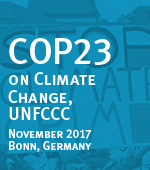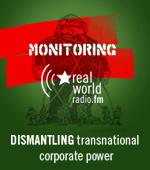English · Español

25 January 2013 | Interviews | Extractive industries | Climate Justice and Energy | Social activists at risk
Worse Than it Seems
Conflicts Over Mining and Natural Resources in Oaxaca, Mexico
Download: MP3 (1.4 Mb)
Speaking about mining in Oaxaca, Mexico, could be uncomfortable and even painful. It is a very complicated issue because of the social aggression against peasant, indigenous and rural communities perpetrated since the 17th century. These communities know its history, its methods and its results very well.
From the Mixteca region to the Istmo there have been different small-scale mining projects. The communities living there are still suffering the environmental consequences of mining.
Such is the case of Capulalpam de Mendez in Valles Centrales, whose rivers are severely polluted. Monica Montalvo reported for Real World Radio from the Mesoamerican Meeting “Yes to Life, No to Mining” held in Oaxaca, Mexico. She interviewed Marco Leyva Madrid of the group Services for Alternative Education (EDUCA), an organization member of the Oaxacan Network in Defense of Territories.
Marco said the main reason to organize the meeting is the negative impacts of the extractive models in the communities. “How to share everything that has been accomplished in terms of resistance to mining?” seems to be the key question at the meeting.
The Mexican Geological Service has delivered 344 mining concessions to corporations in an overall area of over 700,000 hectares of land, representing almost 8% of the state’s territory.
These mining concessions are distributed in eight regions, mainly controlled by 13 Canadian corporations and two from the US. Most municipalities, ejidos and agrarian communities have no information about the existence of mining concessions in their lands so it could be concluded, and the Mining Law provides it, that there was no prior consultation to obtain the consent of the communities.
The concessions gave way to 33 mining projects, of which only two are in the commercial exploitation stage. The first of them, of Gold Resource Corp is called “El Aguila” and it is located in San Pedro Totolapam.
The second one, known as “San Jose” is located in San Jose del Progreso municipality in Ocotlan district and it is run by Fortuna Silver Mines corporation.
However, the records show there are at least 15 mining conflicts in Mexico, which have resulted in many deaths, people receiving threats and different conflicts, said Marco.
He said the disclosure of information is key in the resistance.
Marco Leyva also spoke about the different conflicts linked with mining extractive industries, drinking water and hydroelectric dams, especially in Oaxaca.
He also talked about the current debates within the organizations about the installation of wind farms by European corporations that obtained concessions to produce wind energy, which has led to a segmentation and takeover by investors to the detriment of communities.
“They can no longer harvest, there is nothing they can do. In Oaxaca, in the area where electricity is more expensive at the Istmo de Tehuantepec is precisely where these so called ‘green’ projects are being installed”, said Marco.
He said the exchange of experiences is crucial at this moment of resistance in Mexico and Mesoamerica.
Interview by Mónica Montalvo (REMA) for Real World Radio
Photo: MAJLOC







